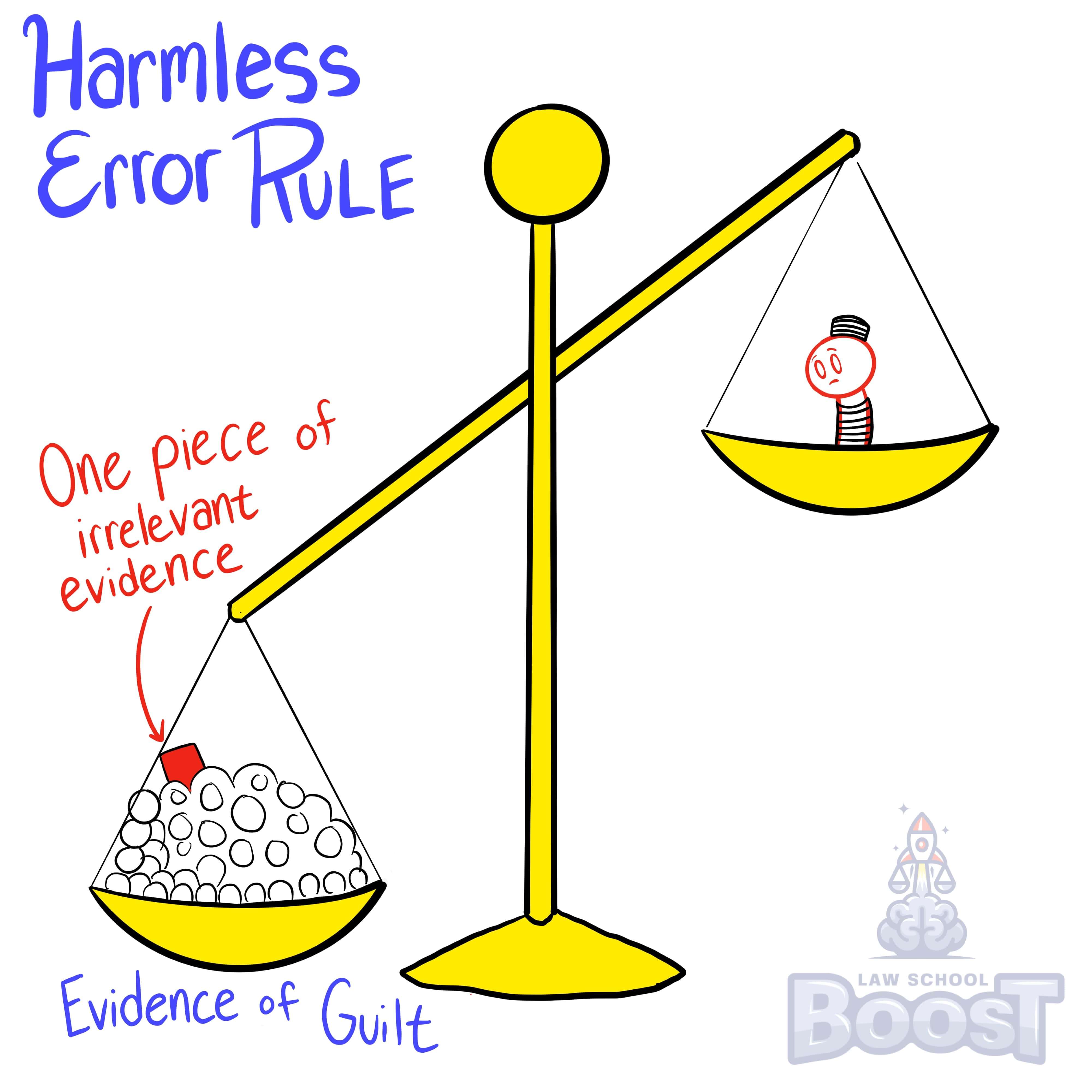🫥
Criminal Procedure • Exclusionary Rule
CRIMPRO#005
Legal Definition
If unconstitutional evidence is admitted at trial, a conviction will not be reversed on appeal if the error was harmless. The government bears the burden of showing the error was harmless beyond a reasonable doubt.
Plain English Explanation
Sometimes, despite the various safety measures built into the system, a person will be convicted even though some of the evidence from the trial was unconstitutional. While it may seem like such scenarios would result in the conviction being reversed, like most things in the legal world: it depends. Specifically, it depends on whether the unconstitutional evidence was harmless to the overall result of the trial.
In other words, trials generally involve a lot of evidence. Physical evidence, testimony, witnesses, etc. Not all evidence has an impact on the outcome of a trial. Thus, where a piece of evidence should not have been admitted into trial, but did not impact the outcome of the trial, then its admission is harmless and the conviction will stand. Note that the burden is on the government to prove that the wrongfully admitted evidence didn't have an impact on the outcome, and they must prove this beyond a reasonable doubt, which is a pretty high bar.
In other words, trials generally involve a lot of evidence. Physical evidence, testimony, witnesses, etc. Not all evidence has an impact on the outcome of a trial. Thus, where a piece of evidence should not have been admitted into trial, but did not impact the outcome of the trial, then its admission is harmless and the conviction will stand. Note that the burden is on the government to prove that the wrongfully admitted evidence didn't have an impact on the outcome, and they must prove this beyond a reasonable doubt, which is a pretty high bar.
Visual Aids

Related Concepts
What are special needs search exceptions to the warrant requirement?
What are the 5 exceptions to the fruit of the poisonous tree exclusionary rule?
What are the exceptions to the warrant requirement?
What are the Terry stop and frisk rules?
What are the wiretapping and eavesdropping exceptions to the warrant requirement?
What does the 4th Amendment protect against?
What is a facially valid warrant?
What is the automobile exception to the warrant requirement?
What is the consent exception to the warrant requirement?
What is the evanescent evidence, and hot pursuit exception to the warrant requirement?
What is the exclusionary rule?
What is the fruit of the poisonous tree doctrine?
What is the good faith defense to an invalid warrant?
What is the plain view exception to the warrant requirement?
What is the search incident to arrest exception to the warrant requirement?
What is the stop and frisk exception to the warrant requirement?
When are police checkpoints valid?
When are police excused from knocking and announcing?
When does a person have automatic standing and a reasonable expectation of privacy in a 4th Amendment violation claim?
When do individuals have no standing and no reasonable expectation of privacy in a 4th Amendment violation claim?
When is a warrant based on a tip by an informant sufficient?
When is the exclusionary rule inapplicable?


